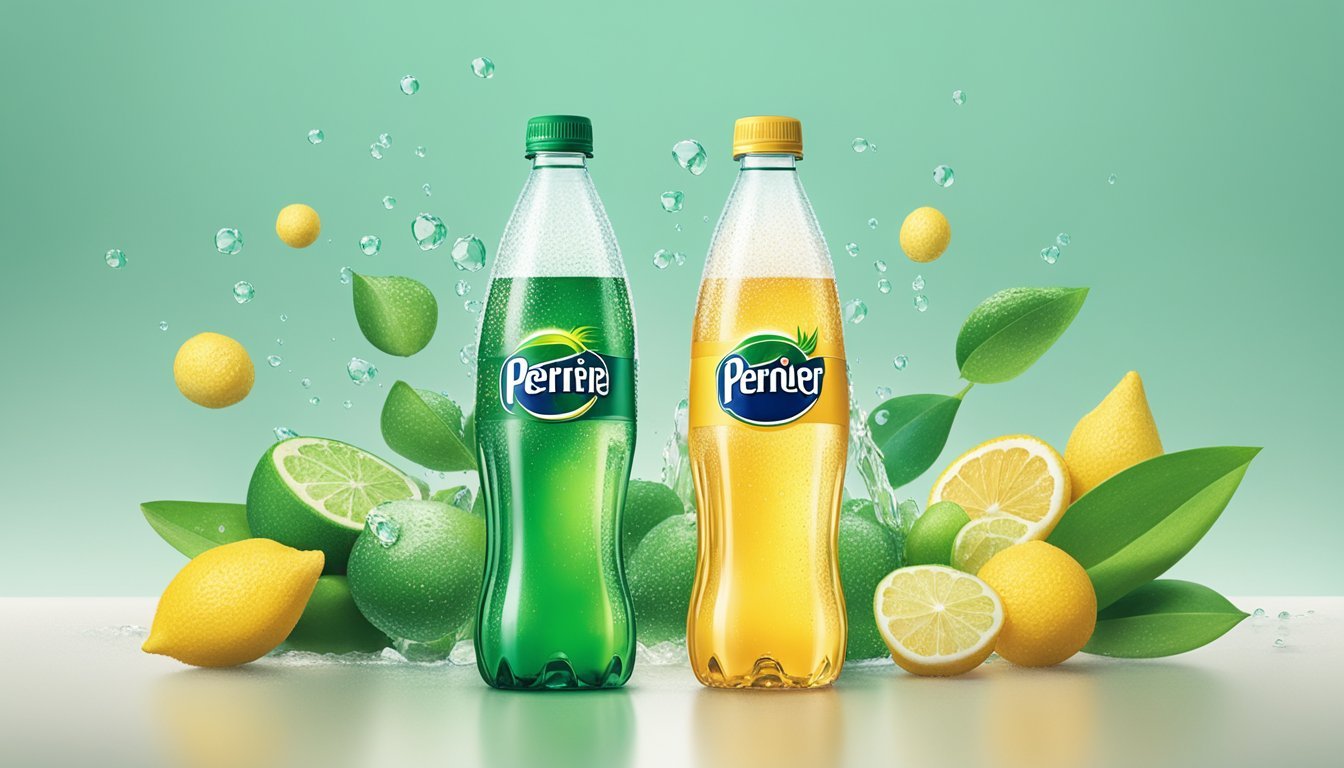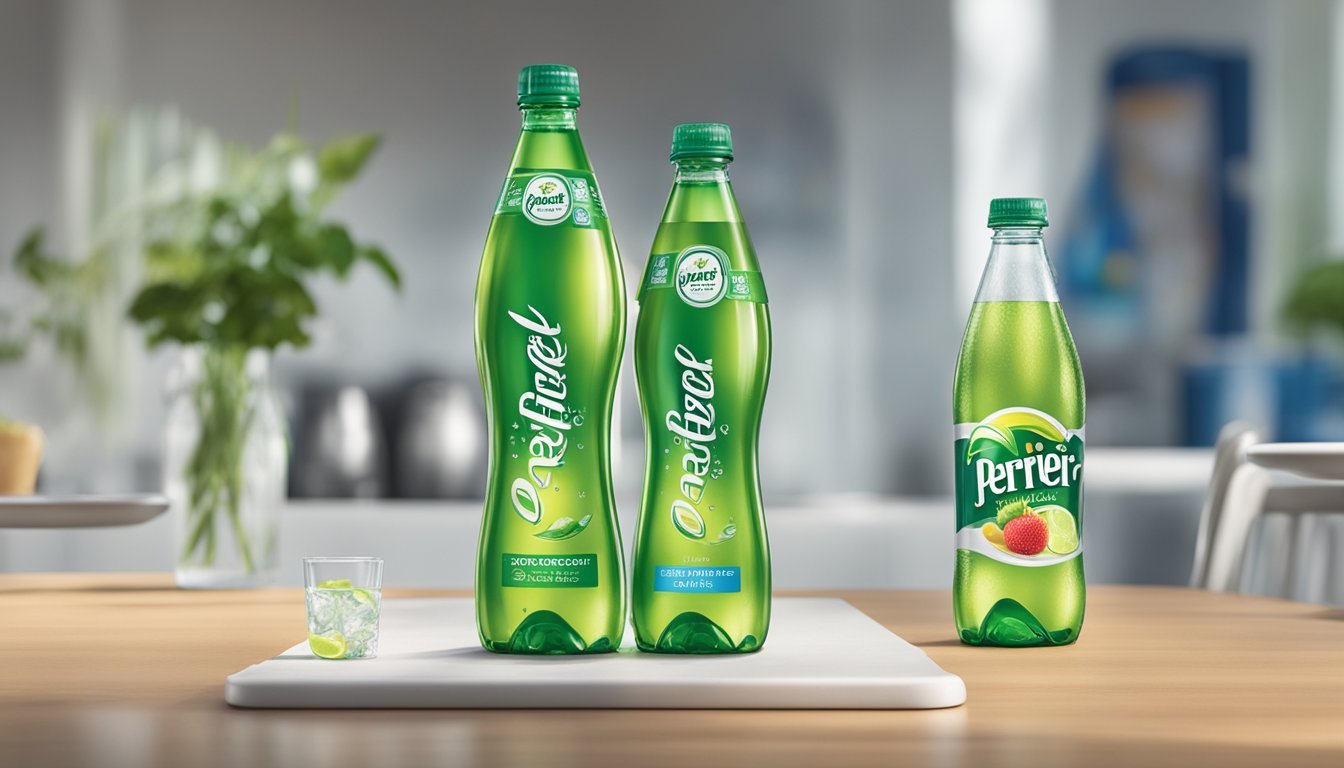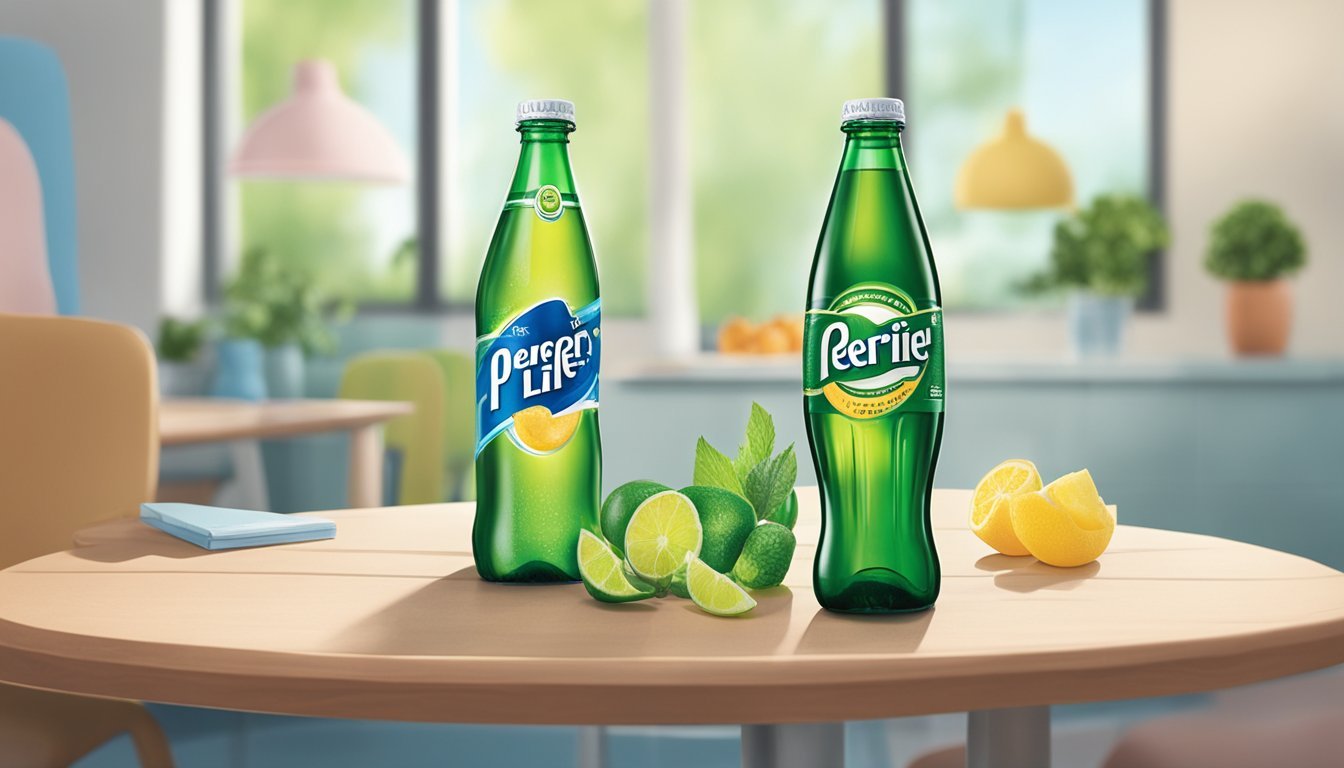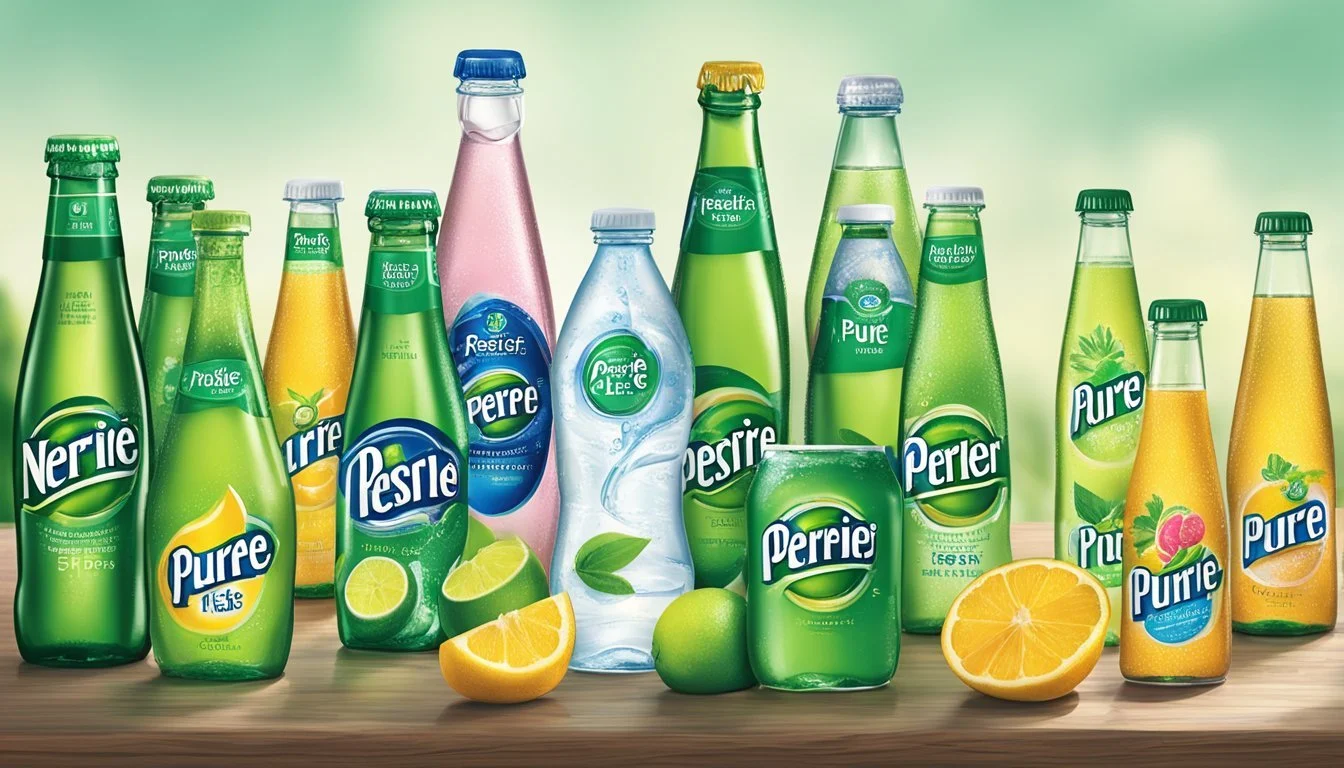Nestlé Pure Life vs. Perrier
A Comprehensive Comparison of Bottled Water Brands
Deciding between Nestlé Pure Life and Perrier is not just a choice between two bottled water brands; it's a reflection of preferences for different types of water. Nestlé Pure Life is known for being a widely available, purified bottled water offering a consistently clean and neutral taste, making it a staple in many households and venues. The purification process it undergoes aims to ensure safety and quality, catering to those who prioritize reliability in their bottled water choice.
Perrier, on the other hand, stands out as a brand of naturally carbonated mineral water, bottled in the South of France. Its effervescence and unique mineral blend give Perrier a distinctive taste and mouthfeel that is often associated with sophistication and is preferred by those who enjoy a more vibrant sensory experience. When considering health, both brands offer hydration, but Perrier's mineral content provides additional elements for consideration. Whether one's preference leans towards the unadorned purity of Nestlé Pure Life or the lively character of Perrier may depend on individual taste, intended use, and health considerations.
Overview of Bottled Water Industry
The bottled water industry has witnessed significant evolution over the years, marked by the growth of numerous brands and increasing consumer demand. This industry's narrative intertwines with environmental discussions, illustrating a complex panorama of market dynamics and ecological effects.
History and Growth of Bottled Water
Bottled water has transitioned from a commodity for the elite to a widely consumed beverage. This shift began in Western Europe and America in the 19th century with the commercialization of mineral water, triggered by its purported health benefits. Brands like Evian and Perrier set early standards as premium mineral waters. In recent times, the industry has seen exponential growth, facilitated by concerns over tap water quality, effective marketing strategies, and the convenience bottled water offers. The industry's competitive advantage lies in brand differentiation and perceived quality.
Popular Brands of Bottled Water
A diversity of brands populates the bottled water market, each battling for consumer loyalty:
Nestlé Pure Life: Established as a global brand, known for its purified water.
Perrier: Positioned as a premium brand, it is a sparkling mineral water sourced from France.
Dasani and Aquafina: Owned by Coca-Cola and PepsiCo, respectively, offering purified tap water.
Fiji Water: Known for its artesian sourcing and presence in over 60 countries.
Poland Spring: A spring water brand deeply rooted in the American Northeast.
These brands vary in source and type, like spring water (e.g., Poland Spring), mineral water (e.g., Perrier), or purified water (e.g., Aquafina), offering a spectrum of taste profiles and health benefits.
Environmental Impact of Bottled Water
The convenience of bottled water comes at an environmental cost. Production and disposal of plastic bottles, typically made from petroleum-derived BPA-containing materials, have raised concerns. While packaging technology aims to mitigate BPA exposure, the focus is increasingly on recycling and reducing plastics. The stress on natural aquifers and water tables, due to extraction by companies like Nestlé, highlights the gravity of unregulated water sourcing. The industry faces a complex challenge in balancing consumer need, environmental sustainability, and competitive profitability.
Nestlé Pure Life
Nestlé Pure Life, a prominent product in the bottled water market, undergoes a meticulous manufacturing process to meet high health and safety standards. It offers various product variants to cater to consumer preferences, integrating minerals and electrolytes for enhanced taste and benefits.
Manufacturing Process
Nestlé Pure Life sources its water primarily from wells or municipal water supplies. It then employs a detailed filtration process that includes demineralization, and reverse osmosis to remove impurities such as lead and heavy metals. Post-filtration, it adds a unique blend of minerals for both taste and supplemental value.
Health and Safety Standards
The safety of Nestlé Pure Life is paramount. Each batch undergoes stringent testing to comply with the safety standards set by the Environmental Protection Agency (EPA). They ensure that the final product does not contain contaminants beyond the acceptable limits and that it represents clean drinking water.
Product Variants
Nestlé Pure Life offers a range of products including:
Still water, perfect for daily hydration needs
Sparkling water, for those who prefer a fizzy alternative
Flavored water, providing a refreshing variety with natural flavors
Water enhanced with electrolytes, tailored for replenishing after physical activities
Nestlé Water assures that all variants maintain a consistent level of purity and taste across their product line.
Perrier
Perrier is known for its distinctive green bottle and the naturally occurring carbonation of its water, which sets it apart from many other bottled water brands. With a history that dates back to the 19th century, Perrier is a premium French brand of bottled water that is synonymous with sparkling mineral water.
Brand Heritage and Identity
Perrier water originates from a spring in Vergèze, located in the Gard département of France. The brand has built a reputation for sophistication and has been associated with high-end dining experiences. Recognized globally for its iconic green glass bottle and the unique bulbous shape, Perrier is a benchmark in the carbonated mineral water market.
Unique Qualities of Perrier Water
The water is naturally carbonated, which provides a refreshing effervescence. Perrier's mineral content includes calcium, magnesium, and small amounts of sodium. The water is often celebrated for its crisp taste and the ability to quench thirst while offering a distinctive, sharp fizz. The alkaline pH of Perrier adds to its purported benefits, making it a choice for those preferring alkaline water.
Product Range
Perrier offers a diverse range of products including:
Original Perrier: The classic carbonated mineral water in its pure form.
Flavored Perrier: A variety of flavors, such as lime and pink grapefruit, catering to a wider audience.
Perrier in Different Sizes: Available in various sizes from small personal bottles to larger ones suited for sharing.
Furthermore, Perrier has adapted to consumer needs by offering their products in both glass and recyclable PET bottles, although the glass bottles remain a favorite for maintaining the purity of taste.
Health Considerations
When selecting between Nestlé Pure Life and Perrier, understanding the health implications tied to mineral content, adherence to regulations, and the comparison to tap water is essential.
Bottled Water vs. Tap Water
Bottled water, such as Nestlé Pure Life and Perrier, often appeals to individuals seeking convenience and perceived purity. Tap water, on the other hand, is typically more cost-effective and environmentally sustainable, but its quality can vary depending on the location and source. In terms of health, both tap water and bottled water are generally considered safe to drink if they meet regulatory standards. However, it is important to note that some consumers prefer bottled water due to concerns over potential contaminants in tap water.
Mineral and Electrolyte Content
The mineral and electrolyte content of water can affect its taste, health benefits, and suitability for certain diets. Nestlé Pure Life is purified water that includes added minerals for taste. It typically contains calcium chloride, sodium bicarbonate, and magnesium sulfate. These additions can provide necessary electrolytes to the body. Conversely, Perrier is a natural sparkling mineral water, rich in calcium, magnesium, and other minerals. Perrier's naturally occurring carbonation and minerals may offer an advantage to those who prefer water with a higher mineral content.
Mineral Nestlé Pure Life (added) Perrier (natural) Calcium + ++ Magnesium + ++ Potassium - +/-
Regulations and Quality Assurance
Both Perrier and Nestlé Pure Life must comply with stringent quality assurance standards to ensure safety and cleanliness. In the United States, the FDA sets standards for bottled water, which must be as protective of public health as EPA standards for tap water. The International Bottled Water Association (IBWA) also provides additional voluntary guidelines that members follow to promote consistent safety and quality. Nestlé and Perrier abide by these regulations, ensuring that they offer clean drinking water within acceptable health standards.
Taste and Consumer Preference
Choosing between Nestlé Pure Life and Perrier for bottled water can depend largely on taste and consumer satisfaction. These two brands offer distinct flavor profiles and have varying standings in customer reviews and rankings.
Flavor Profile Comparison
Nestlé Pure Life is often characterized as having a clean and smooth taste, with its purity attributed to a rigorous filtration process. It does not contain any added minerals, giving it a basic taste that's consistent and mild, aiming for a pure water experience.
Perrier, on the other hand, is known for its unique effervescent quality. This sparkling mineral water comes from a spring in France and contains a blend of minerals, contributing to its distinctive crisp and refreshing taste.
Consumer Reviews and Rankings
Nestlé Pure Life: Customer reviews frequently describe Nestlé Pure Life as a dependable and affordable choice for everyday hydration. However, it rarely tops the charts in taste tests and doesn't elicit strong feelings of preference due to its average taste.
Perrier: Perrier often garners positive attention for its invigorating and slightly salty taste, attributable to its mineral content. It stands out among sparkling waters and typically receives higher favorability ratings from those who prefer a fizzy option.
Market Presence and Accessibility
In examining the market dynamics of Nestlé Pure Life and Perrier, their global reach and pricing strategies are critical in understanding consumer choice.
Global Availability
Nestlé Pure Life boasts a formidable market presence as it's distributed extensively worldwide, credited to the Nestlé corporation's vast distribution network. Whether through supermarkets, convenience stores, or direct delivery, consumers across various countries can easily find this brand. Perrier, on the other hand, is recognized as a luxury sparkling water with French origins. It's marketed as a premium product, often found in high-end restaurants, bars, and certain retailers around the globe.
Price Point Analysis
When it comes to pricing, Nestlé Pure Life is positioned as a cost-effective option for consumers looking for quality bottled water. This brand appeals to a broader market segment due to its affordability:
Nestlé Pure Life: Average Price per Liter - $1.00 (based on standard retail pricing)
Perrier: Average Price per Liter - $1.50 to $2.50 (varies by retailer and package size)
Perrier's price point is indicative of its luxury status, which aligns with its marketing as a premium sparkling water. It's often seen as a choice for those willing to spend more for its distinct taste and brand prestige.
Challenges and Controversies
Nestlé Pure Life and Perrier bottled waters face substantial challenges and controversies surrounding legal, ethical, and environmental issues that continue to stir public concern and debate.
Legal and Ethical Issues
Nestlé, the company behind Perrier and Nestlé Pure Life, has faced legal challenges regarding its water sourcing and branding. A New York man filed a lawsuit against Nestlé USA, alleging that Perrier's branding was misleading as the spring water required treatment due to contamination. Ethical considerations also come into play with accusations that Nestlé’s operations in areas like Colorado are exacerbating conditions of drought by extracting water in regions where resources are scarce.
Local and Global Environmental Concerns
The extraction of water for bottled products by companies like Nestlé has raised environmental impact alarms, especially concerning the sustainability of local ecosystems and global carbon footprints. Nestlé Waters has been called out for its practices that may conflict with sustainable practices, such as the adequate replenishment of water sources. There have been instances questioning Nestlé's sustainability commitments and whether they align with their actions towards environmental stewardship.
This section has thoroughly examined the breadth of challenges faced by Nestlé Pure Life and Perrier within legal, ethical, and environmental contexts, reflecting on how bottled water is not just a product but also a subject of societal scrutiny.
Conclusion and Recommendations
In addressing the Nestlé Pure Life versus Perrier debate, one must consider factors such as taste preference, intended use, and health considerations to guide an informed decision.
Summary of Key Points
Nestlé Pure Life is a widely accessible brand and regarded as an average but reliable option for hydration. The water originates from various sources and is purified, potentially including added minerals for taste. Perrier, on the other hand, is a well-known brand of sparkling mineral water, sourced from a spring in France. Often chosen for its bubbly character, Perrier is associated with a unique taste and a more upscale image.
Nestlé Pure Life: Purified water, added minerals, ubiquitous availability.
Perrier: Spring water, carbonated, distinctive taste profile.
Expert Opinions
Industry experts often stress the importance of water source and treatment processes in determining water quality. An investigative journalist's deep dive into these brands would likely highlight Perrier's mineral content and carbonation as distinguishing features compared to the more basic composition of Nestlé Pure Life. Nevertheless, both brands are subject to rigorous quality control standards.
Nestlé Pure Life: Emphasis on purification process.
Perrier: Natural spring source, unique mineral blend.
Consumer Guidance
For consumers making a choice between these two brands, the decision may hinge on personal preferences and health considerations. If seeking a straightforward, non-carbonated water for regular hydration, Nestlé Pure Life may be the more practical and cost-effective option. For those preferring a touch of luxury or a sparkling alternative, Perrier can serve as a healthier choice over sugary carbonated beverages.
For Hydration: Nestlé Pure Life is an apt choice for everyday use.
For Taste & Enjoyment: Perrier may appeal to those who enjoy mineral-rich sparkling water.
Ultimately, the bottom line in the Nestlé Pure Life vs. Perrier discussion is that both brands offer distinct benefits; the optimal selection is contingent upon individual needs and choices.









